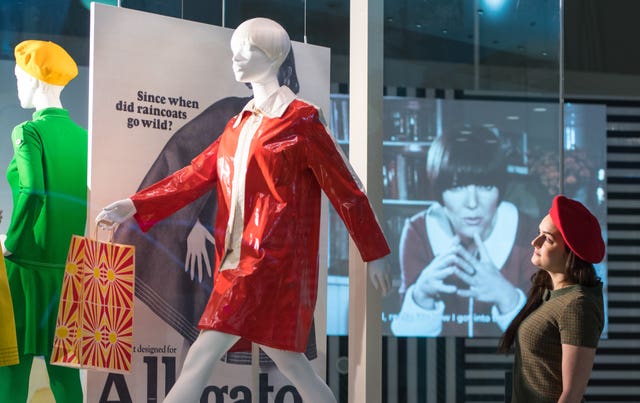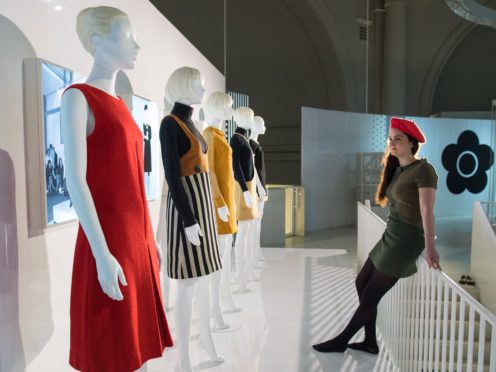The work of miniskirt pioneer Dame Mary Quant will go on display at the V&A in a retrospective celebrating her commitment to feminism and democracy in fashion, organisers have said.
The designer’s work has been praised for creating a “movement of liberation” for working women bound by conservative clothing and gender roles.
But she has long been overlooked for exhibitions because of her belief in democratic, available fashion, curators said.
Dame Mary’s sleek, streamlined and vibrant designs revolutionised womenswear and defined the look of London in the 1960s. Her garments borrowed from men’s clothing and blurred gender lines.

From a small boutique to a global fashion label, the designer harnessed mass production to make fashion available for a whole generation of women.
Curators at the V&A said this passion for casual, democratised fashion kept Dame Mary from her true due when compared to the likes of Christian Dior.
But an exhibition of the British designer’s work is now opening, with the aim of celebrating her sartorial efforts to liberate women from formality.
Tristram Hunt, director of the V&A, in Knightsbridge, London, said Dame Mary embodied “the fantastic spirit of optimism in the 1960s” and that she was a “powerful role model for working women at a time of entrenched gender conservatism”.
The countdown begins… Discover the legendary designer and pioneer of the Swinging Sixties #Mary Quant at the V&A. Opens on 6 April. Sponsored by King’s Road. With support from GRoW@Annenberg @Annenberg_FDN #WeWantQuant
Find out more: https://t.co/AefbdaUZXx pic.twitter.com/1LRNCppreN
— V&A (@V_and_A) April 3, 2019
Describing Dame Mary as a “democratising” influence in fashion, Mr Hunt added: “She created a movement. A movement of freedom and fun. A movement of liberation.”
Now 85, Dame Mary began designing in the 1950s, and her distinctive style began to blossom in an era of increased freedom with the birth of Swinging London. Her early boutique, Bazaar, sold out of the early dresses crafted in a bedsit.
According to curators, she realised that “that people wanted to look like her”.
More than 100 garments showcasing her style were being displayed at the V&A, using the museum’s vast collection. A public appeal for objects was also made and over 1,000 responses were received.

Jenny Lister, co-curator of Mary Quant at the V&A, said the exhibition was overdue.
Ms Lister told the Press Association: “The motivation, sincerely, was a feeling of outrage really that she had been kind of left out of exhibitions and from serious books.
“I think because of her emphasis on mass production and democracy.
“She can now be recognised for her true role in the evolution of fashion.
“Right from the start she defined the look for a new generation of women who didn’t want to dress like their mothers.
“She said fashion was a tool to compete in life outside the home.
“The fashion at the time was very much influenced by the New Look of Christian Dior. The London look was different. It made people feel like they could express themselves much more than they could before.
“It’s this whole freedom that we take for granted so much now. Freedom, rebelling, risk-taking – you can see that in fashion today.”
Ms Lister added that, in an era of Instagram influencers, imagining boundaries in fashion was difficult.
She said she hoped the exhibition would remind a new generation of the revolutions needed to break down barriers, with short skirts, PVC raincoats, decorative underwear and masculine tailoring examples of Dame Mary’s innovations.
She added: “You couldn’t wear what you liked 50 or 60 years ago; for instance women didn’t really wear trousers in public.
“She was really seeing at the time how androgynous fashion could take over, and unisex clothes.”
The Mary Quant retrospective opens at the V&A on April 6 and runs until February 16 2020.
